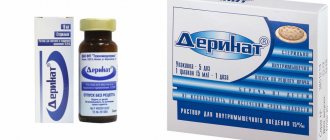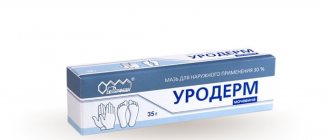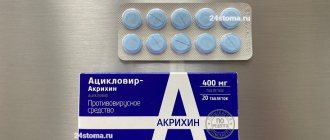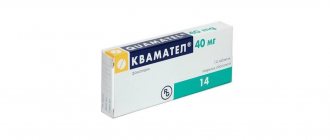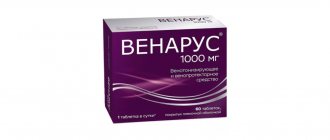Many antibiotics have universal action. For example, the drug "Cifran" is used to treat bacterial infections of the throat, mouth, nose, abdominal organs, urinary tract and other systems. The product is affordable and gives a fairly good effect.
Antibiotic "Cifran": composition and description
"Cifran" is an antibiotic whose active ingredient is ciprofloxacin in the form of lactate. Additional components are silica gel, sodium salts, magnesium salts, talc and others. Available in the form of tablets and solution. Each ml of solution contains 2 mg of active substance.
The antibiotic affects different types of bacteria - gram-positive and gram-negative. They destroy microorganisms resistant to penicillin, cephalosporin and other active substances. Moreover, suppression of bacteria is observed in all tissues and organs. As a result, inflammatory processes are suppressed and gradual recovery after infection occurs.
The product is stored under normal room conditions at a temperature of no more than 25 degrees. Direct sunlight should be excluded. Access for children is prohibited. The shelf life is 2 years from the date of production. After this time, you should not take tablets or solution.
Cifran ST film-coated tablets 10 pcs. in Moscow
Both ciprofloxacin and tinidazole are well absorbed from the gastrointestinal tract. Cmax of each component is reached within 1–2 hours. Full tank ciprofloxacin and tinidazole are well absorbed from the gastrointestinal tract. The Cmax of each component is achieved within 1–2 hours. The complete bioavailability of tinidazole is 100%, and plasma protein binding is 12%. T1/2 - about 12–14 hours. The drug quickly penetrates the body tissues, reaching high concentrations there.
Tinidazole creates concentrations in the cerebrospinal fluid equal to its plasma concentrations and is reabsorbed in the renal tubules. Tinidazole is excreted into bile in concentrations slightly below 50% of its plasma concentration. About 25% of the dose taken is excreted unchanged in the urine. Metabolites account for 12% of the administered dose and are also excreted in the urine. Along with this, there is a slight excretion of tinidazole in feces.
Ciprofloxacin is well absorbed after oral administration. The bioavailability of ciprofloxacin is about 70%. When used together with food, the absorption of ciprofloxacin is slowed down. 20–40% of the drug is bound to plasma proteins. Ciprofloxacin penetrates well into fluids and tissues of the body: lungs, skin, fat, muscle and cartilage tissue, as well as bone tissue and organs of the urinary system, prostate. The drug is found in high concentrations in saliva, nasal mucus and bronchial secretions, semen, lymph, peritoneal fluid, bile and prostate secretions. Ciprofloxacin is partially metabolized by the liver. About 50% of the dose taken is excreted unchanged in the urine, 15% in the form of active metabolites such as oxyciprofloxacin. The rest of the dose is excreted in bile, partially reabsorbed. About 15–30% of ciprofloxacin is excreted in the feces. T1/2 - about 3.5–4.5 hours. T1/2 can be prolonged with severe renal failure and in elderly patients. Ciprofloxacin slows down. 20–40% of the drug is bound to plasma proteins. Ciprofloxacin penetrates well into fluids and tissues of the body: lungs, skin, fat, muscle and cartilage tissue, as well as bone tissue and organs of the urinary system, prostate. The drug is found in high concentrations in saliva, nasal mucus and bronchial secretions, semen, lymph, peritoneal fluid, bile and prostate secretions. Ciprofloxacin is partially metabolized by the liver. About 50% of the dose taken is excreted unchanged in the urine, 15% in the form of active metabolites such as oxyciprofloxacin. The rest of the dose is excreted in bile, partially reabsorbed. About 15–30% of ciprofloxacin is excreted in the feces. T1/2 - about 3.5–4.5 hours. T1/2 can be prolonged with severe renal failure and in elderly patients.
Indications and contraindications
The drug is prescribed by a doctor to treat infections associated with pathogenic bacteria. There are quite a lot of indications for use. The medicine is used in the presence of diseases of the respiratory system:
- pneumonia;
- bronchiectasis pathology;
- cystic fibrosis;
- bronchitis of various forms - acute, chronic;
Throat and ear diseases:
- pharyngitis;
- otitis of various origins;
- frontal sinusitis;
- throat pathology tonsillitis;
- sinusitis disease.
Pathologies of the kidneys and urinary tract:
- cystitis;
- chancroid;
- endometritis;
- adnexitis;
- pyelonephritis;
- tubular abscess;
- salpingitis disease;
- infectious pathology chlamydia;
- oophoritis;
- gonorrhea.
Infectious pathologies of organs located in the abdominal cavity::
- salmonellosis;
- peritonitis;
- cholera;
- typhoid fever;
- shigellosis.
The drug can also be prescribed for the treatment of osteomyelitis, sepsis, skin ulcers (if they are infected), septic arthritis, burns of various degrees, phlegmon, bedsores, dysentery and empyema.
The product has few contraindications - “Cifran” is not recommended for use only in certain cases:
- pregnancy at all stages;
- breastfeeding period;
- individual intolerance to the active or auxiliary components, allergic reactions.
Cifran, 10 pcs., 250 mg, film-coated tablets
Severe infections, staphylococcal infections and infections caused by gram-positive and anaerobic bacteria
When treating severe infections, staphylococcal infections and infections caused by anaerobic bacteria, ciprofloxacin should be used in combination with appropriate antibacterial agents.
Infections caused by Streptococcus pneumoniae
Ciprofloxacin is not recommended for the treatment of infections caused by Streptococcus pneumoniae due to its limited effectiveness against the pathogen.
Genital tract infections
For genital infections suspected of being caused by strains of Neisseria gonorrhoeae resistant to fluoroquinolones, information about local resistance to ciprofloxacin should be taken into account and the sensitivity of the pathogen should be confirmed by laboratory tests.
Urinary tract infections
Resistance to fluoroquinolones in Escherichia coli, the most common pathogen causing urinary tract infections, varies depending on the region of the Russian Federation. When prescribing, it is recommended to take into account the local prevalence of Escherichia coli to fluoroquinolones.
Heart disorders
Ciprofloxacin has an effect on prolongation of the QT interval (see section "Side effects"). Given that women have a longer average QT interval compared to men, they are more sensitive to drugs that cause QT prolongation. Elderly patients also have increased sensitivity to the effects of drugs that prolong the QT interval. Ciprofloxacin should be used with caution in combination with drugs that prolong the QT interval (for example, class IA and III antiarrhythmic drugs, tricyclic antidepressants, macrolides and antipsychotic drugs) (see section "Interaction with other drugs"), or in patients with increased risk of QT prolongation or development of cardiac arrhythmias (eg, congenital long QT syndrome, uncorrelated electrolyte imbalances such as hypokalemia or hypomagnesemia, and cardiac conditions such as heart failure, myocardial infarction, bradycardia).
Use in children
It was found that ciprofloxacin, like other drugs of this class, causes arthropathy of large joints in animals. When analyzing the current data on the safety of ciprofloxacin in children under 18 years of age, most of whom have cystic fibrosis, no connection has been established between cartilage or joint damage with the drug. It is not recommended to use ciprofloxacin in children for the treatment of diseases other than the treatment of complications of pulmonary cystic fibrosis (in children from 5 to 17 years old) associated with Pseudomonas aeruginosa and for the treatment and prevention of pulmonary anthrax (after suspected or proven infection with Bacillus anthracis).
Hypersensitivity
Sometimes, after taking the first dose of ciprofloxacin, hypersensitivity to the drug may develop (see section “Side effects”), including allergic reactions, which should be reported to your doctor immediately. In rare cases, after the first use, anaphylactic reactions up to anaphylactic shock may occur. In these cases, the use of ciprofloxacin should be stopped immediately and appropriate treatment should be instituted.
Gastrointestinal tract
If severe and prolonged diarrhea occurs during or after treatment with ciprofloxacin, the diagnosis of pseudomembranous colitis should be excluded, which requires immediate discontinuation of the drug and the appointment of appropriate treatment (vancomycin orally at a dose of 250 mg 4 times a day). In this situation, the use of drugs that suppress intestinal motility is contraindicated.
Hepatobiliary system
Cases of liver necrosis and life-threatening liver failure have been reported with the use of ciprofloxacin. If you have the following signs of liver disease, such as anorexia, jaundice, dark urine, itching, a painful abdomen, you should stop taking ciprofloxacin (see section “Side effects”).
Patients taking ciprofloxacin who have had liver disease may experience a temporary increase in the activity of liver transaminases and alkaline phosphatase or cholestatic jaundice.
Musculoskeletal system
Patients with myasthenia gravis should use ciprofloxacin with caution, as exacerbation of symptoms may occur.
At the first signs of tendinitis (painful swelling in the joint area, inflammation), the use of ciprofloxacin should be stopped and physical activity should be avoided, because There is a risk of tendon rupture, and consult a doctor.
When taking ciprofloxacin, cases of tendinitis and tendon rupture (mainly the Achilles tendon), sometimes bilaterally, may occur within the first 48 hours after the start of therapy. Inflammation and rupture of the tendon may occur even several months after stopping treatment with ciprofloxacin. In elderly patients and in patients with tendon diseases who are simultaneously treated with corticosteroids. There is an increased risk of tendinopathy.
Ciprofloxacin should be used with caution in patients with a history of tendon diseases associated with quinolones.
Nervous system
Ciprofloxacin, like other fluoroquinolones, can provoke seizures and lower the seizure threshold. Patients with epilepsy and previous diseases of the central nervous system (for example, a decrease in the seizure threshold, a history of seizures, cerebrovascular accidents, organic brain lesions or stroke) due to the risk of developing adverse reactions from the central nervous system. ciprofloxacin should be used only in cases where the expected clinical effect outweighs the possible risk of side effects of the drug.
Cases of status epilepticus have been reported when using ciprofloxacin (see section "Side effects"). If seizures occur, use of the drug should be discontinued. There is a risk of developing mental reactions that may occur even after a single dose of ciprofloxacin. In rare cases, depression or psychotic reactions may progress to suicidal thoughts and suicide attempts, including completed ones (see section "Side effects"). In case of development of any side effects from the central nervous system, including mental disorders, it is necessary to immediately discontinue the drug Cifran® and begin appropriate therapy. In these cases, it is recommended to switch to therapy with another antibiotic other than fluoroquinolones. if possible.
In patients taking fluoroquinolones. including ciprofloxacin, cases of sensory or sensorimotor polyneuropathy and hypoesthesia have been reported. dysesthesia or weakness. If symptoms such as pain, burning, tingling, numbness, or weakness occur, patients should inform their doctor before continuing to use the drug.
Skin
Photosensitivity reactions may occur when taking ciprofloxacin, so patients should avoid contact with direct sunlight and UV light. Treatment should be discontinued if symptoms of photosensitivity are observed (for example, changes in the skin reminiscent of sunburn, see section “Side effects”).
Dysglycemia
As with other fluoroquinolones, changes in blood glucose concentrations, including hypo- and hyperglycemia, are possible when using ciprofloxacin. During therapy with ciprofloxacin, dysglycemia may more often occur in elderly patients and patients with diabetes mellitus receiving concomitant therapy with oral hypoglycemic drugs (for example, sulfonylureas) or insulin. When using ciprofloxacin in such patients, the risk of developing hypoglycemia, including hypoglycemic coma, increases. It is necessary to inform patients about the symptoms of hypoglycemia (confusion, dizziness, ravenous appetite, headache, nervousness, palpitations or increased pulse rate, pale skin, perspiration, trembling, weakness). If the patient develops hypoglycemia, treatment with ciprofloxacin should be stopped immediately and appropriate therapy should be initiated. In these cases, it is recommended to switch to therapy with an antibiotic other than a fluoroquinolone, if possible. When treating with ciprofloxacin in elderly patients and patients with diabetes mellitus, careful monitoring of blood glucose concentrations is recommended.
Cytochrome P450
It is known that ciprofloxacin is a moderate inhibitor of CYP 450 1A2 isoenzymes. Caution should be exercised when simultaneous use of ciprofloxacin and drugs metabolized by these enzymes, such as tizanidine, theophylline, methylxanthine. caffeine, duloxetine. ropinirole, clozapine, olanzapine, agomelatine. since an increase in the concentration of these drugs in the blood plasma, due to the inhibition of their metabolism by ciprofloxacin, can cause specific undesirable reactions. The simultaneous use of ciprofloxacin and tizanidine is contraindicated.
To avoid the development of crystalluria, it is not permissible to exceed the recommended daily dose; sufficient fluid intake and maintaining an acidic urine reaction are also necessary.
In vitro, ciprofloxacin may interfere with the bacteriological study of Mycobacterium tuberculosis, inhibiting its growth, which can lead to false negative results when diagnosing this pathogen in patients taking ciprofloxacin.
Side effects
Side effects may occur when taking the drug:
- decreased blood pressure;
- arrhythmia;
- increased heart rate;
- nausea;
- loss of appetite;
- stomach ache;
- diarrhea;
- cholestatic jaundice;
- increased anxiety;
- headaches;
- sleep problems;
- increased fatigue;
- pain perception disorders;
- tinnitus;
- taste disorders;
- hematuria;
- glomerulonephritis;
- crystallurgy;
- dysuria;
- interstitial type nephritis.
Allergic reactions are also possible - urticaria, fever. If such symptoms occur, treatment should be stopped. You will need to consult a doctor - the drug may need to be changed.
Instructions for use of CIFRAN
Severe infectious diseases and mixed infectious processes caused by gram-positive and anaerobic pathogenic flora
Monotherapy with ciprofloxacin is not suitable for the treatment of severe infections and diseases that may be caused by anaerobic pathogenic flora. In these cases, ciprofloxacin should be prescribed simultaneously with other antibacterial drugs.
Streptococcal infection (including Streptococcus pneumoniae)
Ciprofloxacin is not recommended for the treatment of streptococcal infections due to lack of effectiveness.
Genital tract infections
Epididymo-orchitis and pelvic diseases can be caused by fluoroquinolone-resistant Neisseria gonorrhoeae. Ciprofloxacin should be co-administered with other antibacterial drugs, unless ciprofloxacin-resistant Neisseria gonorrhoeae can be excluded. If clinical improvement is not observed within 3 days, then treatment should be reconsidered.
Intra-abdominal infectious diseases
There is limited data on the effectiveness of ciprofloxacin for the treatment of postoperative intraperitoneal infections.
Traveler's diarrhea
When choosing ciprofloxacin, it is necessary to take into account information about drug resistance of the relevant pathogenic microorganism in the country being visited.
Infectious diseases of bones and joints
Ciprofloxacin should be prescribed in combination with other antimicrobial drugs and only after a microbiological study.
anthrax
Use in humans is based on in vitro sensitivity studies and animal studies. Information on the use of the drug in humans is limited. The treating doctor should refer to national and/or international documents related to the treatment of the specified disease.
Children and teenagers
Treatment can only be prescribed by a specialist experienced in the treatment of cystic fibrosis and/or severe infectious diseases in children and adolescents. Safety data obtained from randomized, double-blind studies of ciprofloxacin in children have identified cases of possible drug-related arthropathy (identified by clinical signs and symptoms). The incidence of the disease over a one-year period was 9.0% and 5.7%. Treatment should be started only after assessing the benefit/risk ratio, as joint-related adverse reactions may occur.
Bronchopulmonary infectious diseases
Clinical studies included children and adolescents aged 5-17 years. There are limited data regarding the treatment of children aged 1 to 5 years.
Complicated urinary tract infections and pyelonephritis
Treatment with ciprofloxacin should be considered in cases where treatment with other drugs is not possible, and only after microbiological analysis.
Clinical studies included children and adolescents aged 1 to 17 years.
Other specific severe infectious diseases
Ciprofloxacin is used in the treatment of other serious infectious diseases according to official guidelines or after a careful assessment of the benefit/risk ratio in cases where other treatment is not possible, or after an unfavorable outcome of conventional treatment, and only after microbiological analysis.
Hypersensitivity
After taking a single dose of the drug, hypersensitivity reactions may occur, including anaphylactic and anaphylactoid reactions. If these reactions occur, it is necessary to stop taking the drug and prescribe appropriate conservative treatment.
Musculoskeletal system
At the first signs of tendinitis (painful swelling in the joint area, inflammation), the use of ciprofloxacin should be stopped and physical activity should be avoided, because There is a risk of tendon rupture, and consult a doctor.
In elderly patients with tendon diseases, or those previously treated with corticosteroids, cases of tendon rupture (mainly Achilles tendon) may occur.
Ciprofloxacin should be used with caution in patients with a history of tendon diseases associated with quinolones. Fluoroquinvlones, including ciprofloxacin, reduce neuromuscular transmission and may worsen muscle weakness in individuals with myasthenia gravis.
Photosensitivity
Ciprofloxacin has been shown to cause photosensitivity reactions. Patients taking ciprofloxacin should avoid direct exposure to sunlight and UV radiation.
CNS
It is known that quinolones can initiate a seizure and lower the seizure threshold, due to the stimulating effect of ciprofloxacin on the central nervous system. Cifran should be used with caution in patients with diseases of the central nervous system that provoke seizures, and if these phenomena occur, stop taking the drug.
Cases of polyneuropathy (based on neurological symptoms such as pain, burning, agitation) have been reported in patients receiving ciprofloxacin. If symptoms of this disease occur, including pain, burning, tinnitus, numbness and/or weakness, the drug should be discontinued to prevent the development of an irreversible condition.
The cardiovascular system
Caution should be exercised when using fluoroquinolones, including coprofloxacin, in patients with known risk factors for QT prolongation such as:
- congenital long QT syndrome;
- simultaneous use of drugs that are known to prolong the QT interval (for example, class IA and III antiarrhythmics, tricyclic antidepressants, macrolides, antipsychotics);
- electrolyte imbalance (eg, hypokalemia, hypomagnesemia);
- elderly age;
- heart disease (eg, heart failure, myocardial infarction, bradycardia).
Gastrointestinal tract
The presence of severe and persistent diarrhea during or after treatment with the drug (including several weeks after treatment) may indicate pseudomembranous colitis (life-threatening, possibly fatal), requiring immediate treatment. In such cases, ciprofloxacin should be immediately discontinued and appropriate treatment initiated. The use of antiperistaltic drugs in this situation is contraindicated.
Renal and urinary system
During treatment with ciprofloxacin, to avoid the development of crystalluria, it is necessary to ensure that the patient receives a sufficient amount of fluid.
Hepatobiliary system
Cases of liver necrosis and life-threatening liver failure associated with the use of ciprofloxacin have been reported. If any signs or symptoms of liver disease (such as anorexia, jaundice, dark urine, itching or a tense abdomen) appear, treatment with the drug should be stopped.
Glucose-6-phosphate dehydrogenase deficiency
In patients with glucose-6-phosphate dehydrogenase deficiency, the use of ciprofloxacin may cause hemolytic reactions. It is necessary to avoid prescribing the drug to such patients, except in cases where the potential benefit outweighs the possible risk. In this case, the potential for hemolysis should be monitored.
Resistance
During long-term therapy and in cases of treatment of nosocomial infections and/or infections caused by Staphylococcus and Pseudomonas, there may be a potential risk of isolation of ciprofloxacin-resistant bacteria.
Cytochrome P450
Ciprofloxacin inhibits CYP1A2, thereby causing an increase in serum concentrations of drugs metabolized by this enzyme (for example, theophylline, clozapine, ropinirole, tizanidine). Patients taking these drugs concomitantly with ciprofloxacin should be under medical supervision to identify clinical signs of overdose.
Effect on laboratory parameters
When assessing the results of bacteriological tests, the in vitro activity of ciprofloxacin against Mycobacterium tuberculosis should be taken into account.
The drug reduces the speed of psychomotor reactions, which must be taken into account when driving vehicles and working with mechanisms that require concentration.
Instructions for use of tablets "Cifran"
The drug is taken on an empty stomach, since in this case the therapeutic effect will be maximum. The dosage depends on the disease:
- urinary tract diseases (without complications): 250 mg of active substance every 12 hours;
- prostatitis, urinary tract diseases with complications – 500 mg every 12 hours;
- diseases of the throat, nose, pathologies of the respiratory system, as well as typhoid fever - 500 mg every 12 hours.
The drug "Cifran ST" is taken after meals - do not chew the capsules, wash it down with plenty of water. The standard dosage is 250-300 mg of the active substance every 12 hours.
The drug "Cifran OD" is used before meals. Standard dosage – 250 mg of active substance every 8 or every 12 hours (i.e. 3 or 2 times a day, respectively)
In case of overdose, pronounced adverse reactions appear. In this case, the intake is suspended and a large amount of water is taken. If necessary, symptomatic treatment is indicated.
Attention!
During treatment, you should drink water regularly to prevent dehydration. You should also avoid prolonged exposure to the sun and tanning.
CIFRAN OD
Interaction
Due to inhibition of microsomal enzymes in the liver, it increases the concentration of i.
prolongs T1/2 of theophylline and other xanthines (for example, caffeine), oral hypoglycemic drugs (for example, glibenclamide), indirect anticoagulants (for example, warfarin and its derivatives). If it is necessary to use it together with drugs of these groups, it is necessary to monitor the concentration of the drug in the blood and adjust the dosage regimen accordingly. In the presence of antacids containing magnesium hydroxide or aluminum hydroxide, the absorption of ciprofloxacin is reduced. Thus, the simultaneous use of these drugs should be excluded. In such cases, ciprofloxacin should be taken either 1-2 hours before or 4 hours after taking these drugs. Didanosine reduces the absorption of ciprofloxacin. This is due to the formation of complexes with magnesium salts contained in didanosine preparations.
When used together with probenecid and other drugs that block tubular secretion, the renal excretion of ciprofloxacin decreases.
Metoclopramide accelerates the absorption of the drug, which leads to a decrease in the time it takes to reach Cmax.
Co-administration of uricosuric drugs leads to a slower elimination (up to 50%) and an increase in plasma concentrations of ciprofloxacin.
When combined with other antimicrobial drugs (beta-lactam antibiotics, aminoglycosides, clindamycin, metronidazole), synergism is usually observed; can be successfully used in combination with azlocillin and ceftazidime for infections caused by Pseudomonas spp.; with mezlocillin, azlocillin and other beta-lactam antibiotics - for streptococcal infections; with isoxazolylpenicillins and vancomycin - for staphylococcal infections; with metronidazole and clindamycin - for anaerobic infections. Ciprofloxacin enhances the nephrotoxic effect of cyclosporine. There is an increase in serum creatinine concentration. In such patients, it is necessary to monitor this indicator 2 times a week.
Concomitant use of tizanidine with ciprofloxacin, which is an inhibitor of the CYP1A2 isoenzyme, leads to a 10-fold increase in the AUC of tizanidine. The result of combined use may be a clinically significant and prolonged decrease in blood pressure, leading to drowsiness, dizziness, and inhibited psychomotor reactions.
In patients receiving therapy with ciprofloxacin and phenytoin, variability (decrease or increase) in the concentration of phenytoin in the blood plasma was noted.
Combined use with nonsteroidal anti-inflammatory drugs (NSAIDs) increases the likelihood of side effects of ciprofloxacin on the central nervous system (risk of seizures).
Absorption of ciprofloxacin when administered orally decreases after cytotoxic therapy with antitumor and immunosuppressive drugs.
Drug interactions
If you use "Cifran" together with "Theophylline", the concentration of the latter in the blood increases. Therefore, it is necessary to maintain a time interval of at least 4 hours. A similar rule applies to drugs that contain sucralfate or the following compounds:
- magnesium;
- gland;
- aluminum;
- zinc
Combined use with non-steroidal anti-inflammatory drugs increases the effect of Cifran on the nervous system. It should also be noted that when taking Warfarin together, you will need to monitor the condition with regular coagulation tests.
Attention!
During treatment, alcoholic beverages should be avoided. It is also undesirable to drive a car - concentration may decrease and reaction speed may slow down.
Cifran OD, 500 mg, extended-release film-coated tablets, 10 pcs.
Theophylline.
When used together with ciprofloxacin, an increase in the concentration of theophylline in the blood plasma is observed. If the combined use of these drugs cannot be excluded, the level of theophylline in the blood plasma should be monitored.
Antacids containing magnesium hydroxide or aluminum hydroxide.
In the presence of these antacids, the absorption of ciprofloxacin is reduced, so the simultaneous use of these drugs should be avoided.
Probenecid and other drugs that block tubular secretion.
When used together with probenecid, the renal excretion of ciprofloxacin is reduced.
Antitumor and immunosuppressive drugs.
Absorption of ciprofloxacin after oral administration decreases after cytotoxic therapy.
Analgesics.
Combined use with NSAIDs increases the side effects of ciprofloxacin on the central nervous system.
Phenytoin.
In patients receiving therapy with ciprofloxacin and phenytoin, variability (decrease and increase) in phenytoin plasma levels was noted.
Sucralfate.
In the stomach, sucralfate releases aluminum ions, therefore the absorption of ciprofloxacin is reduced.
Oral anticoagulants.
Quinolone derivatives enhance the effect of oral anticoagulants such as warfarin and its derivatives. When used together with these drugs, blood coagulation tests should be performed regularly.
H2 receptor antagonists.
Histamine H2 receptor antagonists do not have a significant effect on the bioavailability of ciprofloxacin.
Glyburide.
In rare cases, combined use with ciprofloxacin can lead to severe hypoglycemia.
Metronidazole.
When ciprofloxacin and metronidazole were used together, no changes in their plasma concentrations were detected.
Due to a decrease in the activity of microsomal oxidation processes in hepatocytes, it increases the concentration and lengthens T1/2 of xanthines (for example, caffeine), oral hypoglycemic drugs.
Didanosine reduces the absorption of ciprofloxacin due to the formation of complexes with the aluminum and magnesium salts contained in didanosine.
Metoclopramide accelerates absorption, which leads to a decrease in the time to reach its Cmax.
Co-administration of uricosuric drugs leads to a slower elimination (up to 50%) and an increase in plasma concentrations of ciprofloxacin.
When combined with other antimicrobial drugs (beta-lactams, aminoglycosides, clindamycin, metronidazole), synergism is usually observed; can be successfully used in combination with azlocillin and ceftazidime for infections caused by Pseudomonas spp.
; with mezlocillin, azlocillin and other beta-lactam antibiotics - for streptococcal infections; with isoxazolepenicillins and vancomycin - for staphylococcal infections; with metronidazole and clindamycin - for anaerobic infections.
It enhances the nephrotoxic effect of cyclosporine, there is an increase in serum creatinine; in such patients it is necessary to monitor this indicator 2 times a week. If the use of theophylline is necessary during therapy with ciprofloxacin, theophylline concentrations should be monitored and the dosage regimen adjusted accordingly if necessary.
